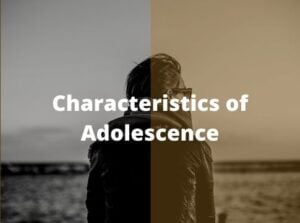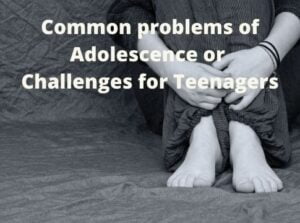Adolescence is a transitional age of physical and psychological human development generally occurring during the period from puberty to legal adulthood.
The period of Adolescence is most closely associated with the teenage years, through its physical, psychological and cultural expression can begin earlier and later
Meaning and Definition of Adolescence
The term adolescence is derived from the Latin word “Adolescere” which means “to grow up”. It is a critical stage of development that lies between later childhood and maturity, emerging from childhood and merging into adulthood.
During the period of adolescence, development is great physical and mental changes occur. Therefore, the stage of development is a period of uncertainly, when everything is in ferment.
Staley Hall define adolescence as “a period of great strain, stress, storm and strife”
Stages of Adolescence
There are three main stages of adolescence are-
- Early adolescence: Early adolescence lies between the age of 9-13 years. This stage is characterized by a spurt of growth and development of secondary sexual characteristics.
- Mid Adolescence: mid-adolescence lies between the age of 14-15 years. This stage is distinguished by the development of a separate identity from parents and a new relationship with peer groups and the opposite sex and experimentation.
- Late Adolescence: Late adolescence lies between the age of 16-19 years. At this stage, adolescence has fully developed physical characteristics (similar to adults) and have formed a distinct identity and well-formed opinions and ideas.
Development in Adolescence
The various dimension of adolescence development are as follows-
Physical Development in Adolescence
- Growth Spurt: In a span 0f 7-9 years boys and girls grow up to be a young man and women. For 2-3 years, they experienced what is referred to as the growth spurt. Adolescence shoots up in height and gains on weight. Usually, the growth spurt begins two years earlier for girls than for boys but it is last longer for boys.
- Changes in body proportions: The rapid acceleration in height and weight is accompanied by changes in body proportions. The different parts of the body have their sequence and rate of growth. Some grow slowly while some others grow very fast. At this stagehands and feet become almost adult size before the legs and arms reach their length. Girls hip become wider concerning their shoulder.
- Changes in facial features: There is a slight change in facial features. The Jaw and the nose become larger, while the mouth widens and the chin becomes prominent.
- Changes in muscles and body fat: In both the boys and girls as their height increase and also a rapid increase in the development of muscles. Boys are grown more muscles than girls
- Rapid Changes in Reproductive System: Along with the changes in body size, physical changes in the reproductive system also occur leading to sexual maturity. Sexual Maturity consists of two types of changes in the reproductive system: primary sex organ and Secondary Sex organ
Primary Sex organ: Development of primary sex organ in males include penis and testis and in female vagina and ovaries which are called primary sex characteristics
Secondary Sex organ: secondary sex characteristics include breast development in females and facial hairs or beards and growth of pubic hairs in both sexes.
Mental Development in Adolescence
The main features of mental development in adolescence are-
- Adolescence develop the capacity to organize their thought, reflect on them and then come to a decision that may be implemented
- Adolescence develops abstract thinking i.e the ability to imagine phenomena that are not concrete which are hypothetical or imaginary. This includes problem-related to mathematical operation, logic, scientific concepts, law and geography
- They develop creative thinking, they can investigate a problem deeply and find ways to solve it. They are even capable of becoming a conclusion like a scientist
Moral Development in adolescence
Adolescence at this stage is generally idealistic, desiring to make the world a better place and become socially useful. They are at times quick to see flaws in others but slow to acknowledge their facts owing to lack of experience adolescence are often impatient with a pace of change, underestimating the difficulties in making desired social changes
Emotional Development in Adolescence
Increase the activity of hormones during adolescence produce changes in the emotions of adolescence. They experience frequent changes in the mood ranging from feelings of extreme happiness to feelings of sadness. Sometimes they find themselves unstable to control their emotions.
Social Development in Adolescence
During adolescence friends become more important, acceptance and popularity among peers are important to them. To gain acceptance, conformity to the current peer groups is a given priority. This is practised through certain behaviours such as slang language in speech or through an emphasis on changing appearance with new hairstyle and clothes. Adolescence is generally wanted their own identity at this stage
Adolescence also exhibits immature behaviour because their social skills frequently lag behind their mental and physical maturity, there is a strong desire in them for appreciation and recognition.


